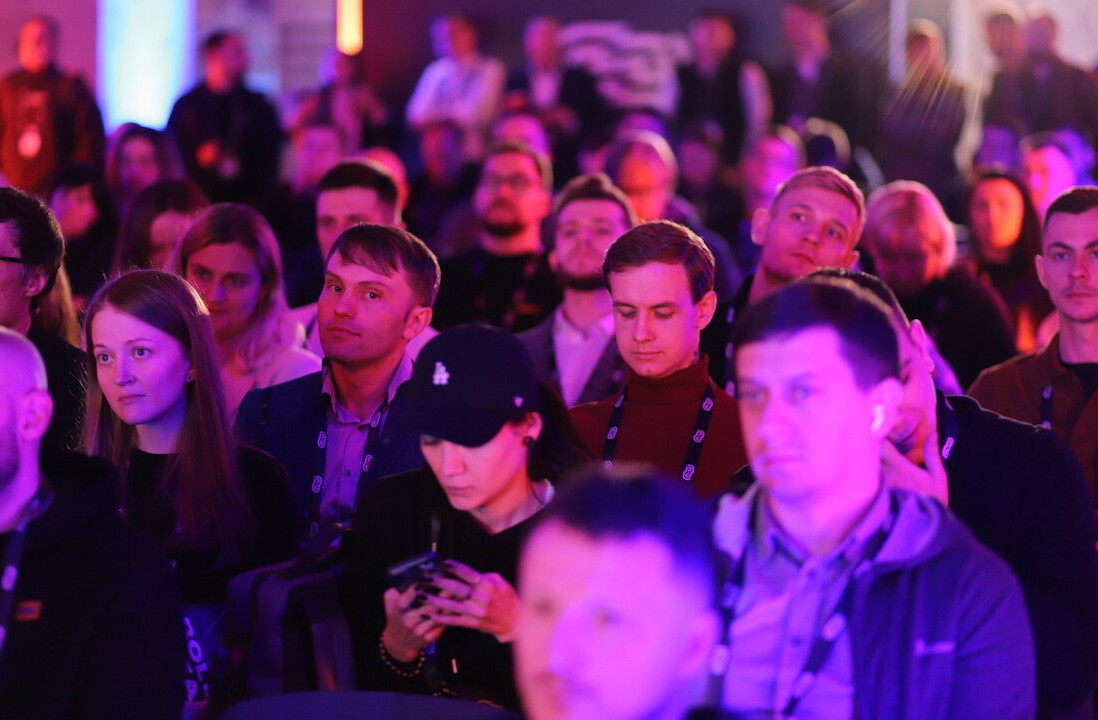
The early days of New York’s Internet scene were similar to the early days of the Industrial Revolution. The men and women who pioneered the Internet in the mid-late 90s lived in a time marked by freneticism, enthusiasm and rapid hiring. Innovation was celebrated and there was a real spirit of anything’s possible.
For any parents out there who think Facebook is dangerous, these entrepreneurs know it pales in comparison to what went down in AOL chat rooms. This was a time when Google wasn’t yet on anyone’s radar and most people performed searches using AOL and Compuserve. The sound of the dial-up 56k modem was exciting, not agonizing and certainly not laughable like it is today. But the high of the craze was quickly deflated by the dot.com bubble’s burst. Companies that had IPOs in the multi-millions found themselves bankrupt. And if that didn’t kill spirits, New York City was brought to a standstill when it watched its two towers come crashing down. It was a very dark time.
Last week, we interviewed dot.com pioneers Stephan Paternot, Robert Levitan, Rich Forman, Jeff Stewart and Andrew Weinreich who didn’t let the collapse of the market and the implosion of the Internet space stop them from continuing to conquer. Never straying from Silicon Alley meant that they found something incredibly special about the small, collaborative and supportive milieu that is still pervasive in New York City’s tech scene today. This week we feature the second half of our intrepid entrepreneurs: Murray Hidary, Steve Krein, Cecilia Pagkalinawan, Jeff Dachis and Laurel Touby, who are all up to new and exciting endeavors.
Murray Hidary of EarthWeb
 Murray Hidary is a photographer, a composer, a world traveler, an athlete and an entrepreneur. His photography has been on display at the San Francisco MoMA, the Guggenheim Museum in New York, the San Diego Art Institute and the Nabokov Museum in St. Petersburg, Russia. At the age of 23, he co-founded EarthWeb, one of the first Internet companies. Since then he has been starting company after company with his brother, Jack Hidary while continuing his creative work in music and photography. “It’s about the excitement of creating something new, that hasn’t been done before, that’s the common denominator,” he says.
Murray Hidary is a photographer, a composer, a world traveler, an athlete and an entrepreneur. His photography has been on display at the San Francisco MoMA, the Guggenheim Museum in New York, the San Diego Art Institute and the Nabokov Museum in St. Petersburg, Russia. At the age of 23, he co-founded EarthWeb, one of the first Internet companies. Since then he has been starting company after company with his brother, Jack Hidary while continuing his creative work in music and photography. “It’s about the excitement of creating something new, that hasn’t been done before, that’s the common denominator,” he says.
Art can be an isolating process but the business world is about collaboration, and working with your team. That’s exciting for me. New ideas don’t happen in isolation.
EarthWeb, which both Murray and Jack Hidary founded in 1994 along with Nova Spivack, served as an IT information portal. When EarthWeb’s IPO took place on November 11, 1998, it was the largest first-day return in NASDAQ history. After the dot.com crash, Internet.com acquired EarthWeb’s content properties and EarthWeb changed its name to Dice Inc., which Murray left in January 2001. Later that year, the Hidary brothers co-founded Vista Research, which connected hedge funds with a network of industry experts in technology, media, telecom, energy, aerospace, healthcare, etc. The company was acquired by the S&P division of McGraw-Hill in 2005.
That same year, the two Hidary brothers founded their next venture– iAmplify, a Web-based content publisher and syndication network for professionals that takes the publishing industry “beyond the book.” Clients ranging from individuals to large corporations include Bloomberg, David Allen, Yoga Journal, author Eckhart Tolle and Condé Nast’s Golf Digest. The two brothers are also cooking up another new company called Primary Insight, which is a 2.0 version of their original hedge fund-expert network Vista Research.

Murray Hidary isn’t your corporate 3-piece suit kind of guy. He strolls into the office dressed in a plaid shirt and Converse sneakers. “It’s about ideas,” says the man with the most well-balanced left and right brain I’ve ever encountered.
CBM: What was it like working with your brother for so many years?
Murray Hidary: It was pretty natural. My father works with his four brothers. I grew up experiencing all of my uncles and first cousins in the business. So working with Jack was a very easy decision to make.
CBM: What are the big differences between working in the Internet business today versus the ’90s?
MH: It’s gotten a lot easier, and less expensive to launch companies today because so many of the platforms and web tools are commoditized and cost-effective now. What’s really cool today, is that I work with many people who were with me 15 years ago. They’ve been with us through several companies and are part of the family.
CBM: What’s your favorite new technology that you wish you’d had your whole life?
MH: My BlackBerry.
CBM: Your BlackBerry?
MH: I tried to switch to the iPhone! But I can’t type as fast on the iPhone’s keyboard. I have an iPad for all the fun apps.
CBM: How much of what you do is driven by the desire to be an entrepreneur?
MH: I always had that bug in me, and I’ve been driven primarily by my own individualism and desire to control my own destiny. When I was 15, every Sunday I’d go to the flea markets in Brooklyn and Queens and sell everything from t-shirts to snow suits. I’d walk away with $300-400 every weekend. I learned more about negotiating and getting a deal done doing that than in any of my schooling.
CBM: Where’s your favorite place to travel?
MH: Traveling is my absolute love. When I was 18, I left NYU and spent a year riding a bicycle over 10,000 miles throughout Thailand, Malaysia, Singapore, Fiji, New Zealand and Australia. I love exploring this planet that we all share. One of my most recent, and favorite trips was going to Iceland for 3 weeks and doing a lot of hiking in the glacial region.

Steven Krein of Promotions.com
Steven Krein has been building Internet companies for 15 years. He was the co-founder and CEO of the first Internet promotion and technology company, Webstakes, which was founded in 1996. The name changed to Promotions.com when it went public in 1999, and achieved a market capitalization of more than half a billion dollars. At the time of IPO, Krein was just 29 years old. In less than 4 years, Promotions raised $45 million in venture and strategic capital and grew to more than $27 million in annual revenue and attracted some of the largest brands in the world as clients including Kraft Foods, Citibank and NBC. The company was acquired by iVillage in 2002.
While it’s very cool now to be in New York and building a company, it wasn’t always that way. We were pushing back on the incentive to move to the West Coast. None of us were willing to give up the New York name. Despite the urge to, none of us left. So it’s great that it finally is cool now, but we were all people who worked here, played here, and raised a family here. It wasn’t easy to fight that urge. You had to find talent in New York in a time when there wasn’t a lot of it.
-Steven Krein
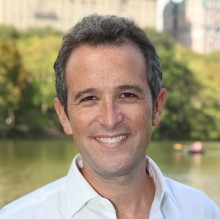 Krein left iVillage and began coaching entrepreneurs, as well as investing in venture businesses. Then, in 2007, one of his investors from Promotions was diagnosed with pancreatic cancer and he saw first hand how discombobulated the health care system is in our country. Shortly after, Krein launched Organized Wisdom to close the gap between doctor visits and the health care online. “I’m turning my talents, networks and relationships towards these bigger, more meaningful problems,” he says.
Krein left iVillage and began coaching entrepreneurs, as well as investing in venture businesses. Then, in 2007, one of his investors from Promotions was diagnosed with pancreatic cancer and he saw first hand how discombobulated the health care system is in our country. Shortly after, Krein launched Organized Wisdom to close the gap between doctor visits and the health care online. “I’m turning my talents, networks and relationships towards these bigger, more meaningful problems,” he says.
His latest venture, Startup Health is geared towards health and wellness entrepreneurs and it’s a fitting compilation of everything he’s done until now. “Everything I’ve done has been practice for Startup Health: raising capital, IPOing, selling, hiring and firing, navigating the obstacles that are thrown your way as an entrepreneur… it’s all culminating into this initiative,” he says. “There’s a concept I like, ‘Unique Ability’ it’s doing what you love and what you’re great at. I look at Startup Health as truly one of my unique abilities in life– running a program to teach health and wellness entrepreneurs and help connect them with capital.”
CBM: What’s the coolest thing you’ve done recently as an entrepreneur?
Steven Krein: I recently had the chance to meet with President Obama and Vice President Joe Biden in the Oval Office with just my partner. It was the four of us talking about Startup Health. Having a chance to pitch the President of the United States on a concept and a business that we created was just off the charts incredible. And he was incredibly supportive.
CBM: What are you most proud of having accomplished in your life?
SK: I’m a father of 3 beautiful little girls, ages 3-8 and I have an incredible wife. Without a doubt, I’m most proud of my family. I’ve been able to be both an entrepreneur, have a family and live in New York– what an incredible gift all of that is.
I’ve also been very fortunate to have had incredible mentors around the way. In the last year, I’ve gotten to know Jerry Levin, the former CEO of Time Warner. He’s the chair of Startup Health and an incredible mentor. When you don’t have a boss, you have to look to other people who have qualities that you admire. I’ve been fortunate; Levin is humble, family focused, wildly successful yet still very grounded.
I surround myself with other entrepreneurs who are doing amazing things. I tend to be attracted to types of people who are “batteries included” vs. “batteries not included”.
CBM: When did you know you wanted to be an entrepreneur?
SK: When I was 9 years old I started my first business as a magician clown doing birthday parties for kids in the neighborhoods. I typed up my cards on a typewriter and started my own business.
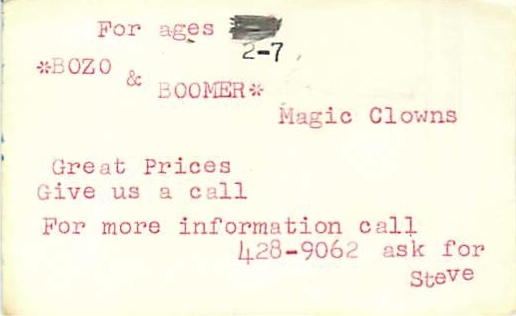
Cecilia Pagkalinawan
During “New York tech 1.0” Cecilia Pagkalinawan was perched at the crux of fashion and e-commerce. While working at an ad agency in 1994, Pagkalinawan was referred to as “The Internet Expert.” She was taken to numerous Fortune 500 companies to discuss what the Internet was and how they should use it. The CEO of an early Internet company called K2 offered her a job to join as its 6th employee. 2 years later, the company went public and she became the VP of Client Services. In 1997, she was hired away by a Canadian company to start its U.S. operations. Within 6 months, the financial backers pulled out and she acquired the company she had started in New York and found herself suddenly an “accidental CEO.”
She called the company BoutiqueY3k, and raised $150,000 in angel investment to run what became the Internet’s first digital agency focused on fashion and shopping. At a time when less than 2% of investment was going to women and when Silicon Valley VCs were ignoring New York all together, Pagkalinawan raised a whopping $6.5 million dollars from the West Coast based Vantage Point Venture Partners. Within two years, she grew the company to 26 people with almost 2 million in billings. But then life for Pagkalinawan came to a screeching halt. The bubble burst, but even more tragic was the sudden death of her sister, who at age 33 passed away from a prescription drug overdose.
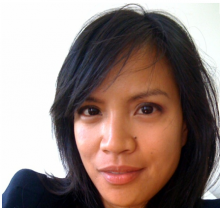 Pagkalinawan says it took her at least 7 years to feel semi-normal again and that her sister’s death caused her to go through a bout of depression. An interested acquirer offered to buy BoutiqueY3k on the condition that Pagkalinawan stay on for 3 years. At this point, she needed time off so she shut down the company and took a road trip with two girlfriends who were unemployed during the dot.com crash. They drove across America, hit up Jazz Fest, went snowboarding in Telluride, and tried to recapture their lives. At some point after the trip but during her sabbatical, Pagkalinawan became pregnant. And in preparation to become a single mom, she returned to the city and got herself a job. She worked in fashion for Burberry and then for Frette and La Perla, all the while keeping close tabs on the tech industry. Wanting to apply what she’d learned working for multinational brands to the class of young designers, she created a platform to enable talented entrepreneurs to sell their fashion products directly to consumers.
Pagkalinawan says it took her at least 7 years to feel semi-normal again and that her sister’s death caused her to go through a bout of depression. An interested acquirer offered to buy BoutiqueY3k on the condition that Pagkalinawan stay on for 3 years. At this point, she needed time off so she shut down the company and took a road trip with two girlfriends who were unemployed during the dot.com crash. They drove across America, hit up Jazz Fest, went snowboarding in Telluride, and tried to recapture their lives. At some point after the trip but during her sabbatical, Pagkalinawan became pregnant. And in preparation to become a single mom, she returned to the city and got herself a job. She worked in fashion for Burberry and then for Frette and La Perla, all the while keeping close tabs on the tech industry. Wanting to apply what she’d learned working for multinational brands to the class of young designers, she created a platform to enable talented entrepreneurs to sell their fashion products directly to consumers.
Cecilia Pagkalinawan is now the founder and CEO of StyleTrek, an online boutique featuring independent designers. I first covered StyleTrek last November when it opened its doors internationally, expanding beyond the U.S. to 91 countries. The site currently has designers from 5 continents, and is taking on about 25-50 new designers each year. Her son Mateo is now 9 years old.
CBM: It sounds like you had a very early mid-life crisis, what can you tell others about the importance of slowing down?
Cecilia Pagkalinawan: We were all really young, working crazy hours and trying to do everything. We had to convince our investors, partners, even our family that this whole Internet thing was going to be a part of everyone’s lives. Clients asked me, ‘Will people put their credit cards online? Will they buy clothing without trying them on?’ We had to do a lot of convincing.
My sister passing away gave me a wake up call. Within 4 months of the event I had to shut down my business. At that point I knew how important it is to pace yourself, as well as maintain your personal life and relationships with close friends and family. This time around I’ve kept that in mind. We’re not super heroes. Sometimes we have to slow down.
CBM: Do you think you could’ve created StyleTrek 15 years ago?
CP: There was no cross border technology available, in fact most payment systems were still restricted to U.S. only. Most of the companies now doing cross border ecommerce services have grown or surfaced in the past 2 years and the momentum to further grow in that area is about to happen. We’re still in the infancy.
CBM: What’s your favorite new technology that you wish you’d had your whole life?
CP: I’m slightly embarrassed to say this but– Facebook– it’s a great networking tool for business, for friends and a great way to keep track of your favorite brands, whether they’re artists, musicians, designers, you name it.
CBM: What do you think of Google+?
CP: I’m on Google+ but I have not made a single update. I go to Google+ on occasion but it’s the same feeds I’m getting from friends on Facebook. I think Google+ got the early adopters, but I also have nieces, nephews and cousins who haven’t migrated to Google+. I prefer to interact with Facebook right now because everyone important to me is there.
CBM: You’ve watched men in this scene for many years now and seen the arrogance that comes with success. Everyone handles success differently, regardless of sex, but have you seen women become as arrogant as men in this industry?
CP: There are some who are, but they don’t publish it, they don’t talk about it to the press. We don’t have female Zuckerbergs or Jason Calacanis’s out there yet and that’s fortunate to some degree. I mean, it’s unfortunate we haven’t had female entrepreneurs with that great of success or huge exits that can walk around and say anything they want without worrying about offending anyone. Who knows, maybe in 2 years we will. Today, 15% of investment dollars are now going to female entrepreneurs. It was only 2% when I started.
Jeff Dachis
In 1995, in an apartment in Manhattan’s Alphabet City, Jeff Dachis and his partner Craig Kanarick started their first company Razorfish, to pioneer the new media field. After a few months, Time Warner hired the team to build a website for the New York Botanical Garden, which was one of the first companies to have an animated homepage, utilizing the “server-push” capabilities of the latest Netscape browser. With strategic investment from Omnicom, Razorfish moved to new offices and redesigned its branding to include the slogan “Everything that can be digital will be.”
Over the next several years, Razorfish acquired several companies and expanded internationally. In April 1999, the company had an IPO which raised $48 million at $16 per share. Now, Razorfish is one of the world’s largest interactive agencies. Dachis left Razorfish in 2001 and has since started The Dachis Group, an international services firm focused on developing the future of social businesses.
“There wasn’t a Web when we first started. Craig and I were the first few folks in New York, or anywhere really, who were involved in creating things on the Internet. It was a strange moment in time when all of the facets of the media industry -production and distribution, music, books, magazines, television, radio, video games etc. and a variety of other subsets all came together as multimedia. It’s hard to imagine what the world was like. I didn’t know I wanted to be in the multimedia business until it all came together,” says Dachis.
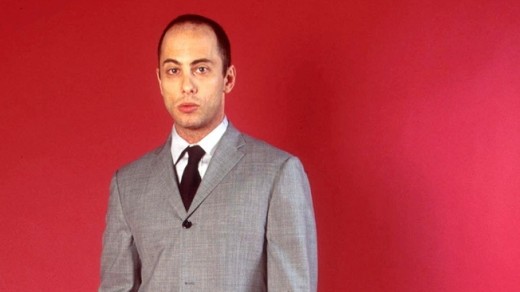
CBM: Looking back how do you feel about the changes happening then and what’s happening now?
Jeff Dachis: First, we thought the world was going to change in a matter of two years. We’d say, ‘By 1996 everything is going to be digital, and everyone is going to be doing business on the Internet.’ But it took so much longer. Now when I think about the future of network and telecommunications, I’m much more stoked than I’ve ever been. All the things I dreamt about, all of what this revolution was going to create, it’s here now, and now it’s going to happen.
CBM: What did you envision in the late 90s that you are most pleased exists today?
JD: Everything you see today, we envisioned back then. The smartphone is a wonderful, wonderful part of my life. We were working on one of the first smartphones, envisioning a personal communication device that enabled you to tap into the network to browse the web, check email and do cool stuff. Over the years, we’ve seen dramatic increases in processing power, battery life and network connectivity and speed. Now, you can video chat with people using a supercomputer in your pocket. We dreamed about that but now it’s a reality.
CBM: What will the iPhone of 2025 look like?
JD: That I don’t know. While we’ve been right in a lot of ways, I’m not one to make predictions anymore.
CBM: What’s powerful about your work with The Dachis Group and social business?
JD: The trends of connection, communication and engagement that the Internet promised 18-20 years ago are only now becoming a reality given the advances in technology, the work place and society.
People connect, communicate and share more now than ever. I mean, right now, in August 2011, we’re in the largest shift in the communication landscape in the history of mankind. How exciting is it to be in this moment right now, right where you are!?
That’s why I’m more excited now than I’ve ever been. We want to help big companies connect and engage. The network effects of businesses becoming social businesses will be amazing. I get to keep doing what I love to do, being on the edge of that wave, that revolution wave. There’s something so amazing about being able to do that. I feel so lucky and so blessed.
CBM: What are you most proud of having accomplished in your life?
JD: My two children. There’s nothing better than that. My son Julian is 9 months old and my daughter Ruby is going to be 8 soon. Having a wonderful, warm family is a huge blessing. My parents are still alive, I have great brothers, sisters, nieces and nephews. It feels like such an accomplishment, I don’t know what I’d do without it.
Professionally, I’ve been in B horror films, danced to classical ballet, been a waiter, produced films, been a DJ…I’ve done a lot. Razorfish as a collective body of work, working alongside Craig Kanarick is a huge accomplishment. Our IPO was very exciting. But I’m most proud to be a good dad. At least, I hope they think I’m a good dad. I’m very proud of the journey that I’ve created for myself.
CBM: Why do you love being an entrepreneur?
JD: My ability to have an impact on the small, little universe that I’m affiliated with is best optimized when I’m able to do what I do unfettered. I can create jobs, I can do interesting things. Whatever small impact I may have on the universe I’m best suited doing that with the support of people around me and running my own company. The thing that I love most is that I can take a lightning bolt of an idea that happens in an epiphany, in a moment of silence or that happens while I’m running and I can take that and turn it into a company that becomes the world’s leader in social business, something that could change the world.
I can’t remember a time when I did not want to be an entrepreneur. I think I’m largely unemployable. All of my older brothers–all 5 of them– are entrepreneurs, so I had many role models. I learned to eat what you kill and be able to sustain yourself independently of anyone else’s decisions.
Laurel Touby of Mediabistro
In 1994, Laurel Touby was 30-years old, living in Manhattan’s East Village, working in media and feeling lonely. To cheer herself up, she started hosting cocktail parties for similar young media types and realized other people had the same need to commune and be together. The parties grew into a community, and soon a newsletter was born. A friend suggested putting the newsletters online so Touby started collecting email addresses. This community that Touby had sparked was suggesting several ideas to her, asking for job boards, asking for classes, asking for more parties. She listened and iterated a decade of suggestions into a multimillion dollar media festoon.
“I didn’t think I was going to run a company, I just thought I was going to throw parties. The cocktail parties turned into a newsletter. People said, why don’t you put all this stuff online? I started collecting people’s email addresses in 1995. Most people didn’t know what a domain name was back then…
As soon as I realized there was a business, I wanted to go global immediately but NYC is the heartbeat of America’s creative class- at least the writers and journalists so we knew this would always be our biggest market…
The next challenge was surviving the crash. That was big. That separated the real companies from the dreamy, idealistic ventures that didn’t last. When 9/11 hit, we had a party scheduled for the next night. We had to figure out, do we keep going with the party? The world seemed to be ending. No one wanted to do anything frivolous. People were dying. I had to question the existence of a business around parties. So, I quickly maneuvered the business to be seen as bringing the community together.
Then the economy crashed, the Internet crashed. Everyone said I should take .com out of our name. People were scared. Working on the Internet became uncool. For the next few years we suffered and struggled to become profitable. We had to be smart about how we stayed alive. I don’t know many that did.
 In July 2007, Touby sold Mediabistro to Jupitermedia, a digital content and research company, for $23 million. Just over one month ago, on June 30th, Laurel Touby officially left Mediabistro. She’s finally moved out of her 6th floor walk-up in Williamsburg, Brooklyn and bought herself a beautiful loft space just off Union Square, complete with skylights, a rotating art wall and an outdoor shower on her private roof terrace.
In July 2007, Touby sold Mediabistro to Jupitermedia, a digital content and research company, for $23 million. Just over one month ago, on June 30th, Laurel Touby officially left Mediabistro. She’s finally moved out of her 6th floor walk-up in Williamsburg, Brooklyn and bought herself a beautiful loft space just off Union Square, complete with skylights, a rotating art wall and an outdoor shower on her private roof terrace.
CBM: So, what is Laurel Touby up to now?
LT: I think I can say, I have three things going but I don’t want to say what they are exactly yet. I don’t want to be that person at a tech meetup who stands up and says, ‘This is what I’m doing!’ only to have it fail and everyone asks what happened a year later. One is a website I’m co-founding, one is a book and one is an online TV show. The book is definitely going to have a lot of interactive elements. On the topic of the website, I don’t want to go there, but it’s not competing with Mediabistro. Each of them could be a full-time job but I don’t know if any of them will pan out.
CBM: Which of the three are you most excited about seeing come to fruition?
LT: All of them. I have way too many options now. Way too many options. The problem is, as soon as you sell your company, everyone says, ‘What’s your next company? What’s your next thing?’ Everyone forces you to start another company so you feel inadequate.
I say, ‘I just sprinted for 10 years or more and now you’re asking me what’s my next race?’ It’s like great. You know, I sprinted and I won the race! But it keeps pressure on you because if you’re next thing isn’t as big as your first thing, it’s like you’re a failure. So I’d rather under promise and over deliver.
CBM: What would you tell yourself, 17 years ago, when you first started Mediabistro?
LT: Probably not to be so hard on myself and not to be intimidated by real business people. I always thought, like many women do, that I was not legitimate unless I had a business degree, or I had management experience. Really, I suffered from all of that. I thought, ‘I better read a lot of books, I better bone up’. But those weren’t the critical things to learn in small, entrepreneurial ventures. The critical things were being able to identify a good product for the customer and being able to motivate and inspire people to help harder than they normally would.
CBM: You’ve seen digital media change drastically over the past decade. What do you think will be the next big thing?
LT: The Internet of Things is going to be huge. It’s just a matter of time. RFID chips are not going to be chips, they’ll be RFID sprays that you just spray onto something. Maybe it’s permanent or not and it’s visible or not but then that thing becomes part of the Internet of Things.
CBM: You’ve been playing in a boy’s world for quite some time. What’s it like being the only woman in the room?
LT: I’ve always enjoyed being the only woman in the room. It’s fun. You stand out, people pay attention to you. And if you’re smart, you can use it. That doesn’t mean I wouldn’t help bring women up in this scene. But I didn’t have the time or energy to go out pulling them in. It was great to see women like Dany Levy [of Daily Candy] in the room or any other women I could find. But I wasn’t like, ‘Let me go out and scour the landscape for females’. I know that might sound anti-feminist but it’s not, it’s every man for himself. And I went to Smith, so I’m aware of all this! I don’t bear the responsibility of helping every woman around. I’m always helping people but not women more than men.
*For Part One of Where are they now? New York City’s Dot Com Entrepreneurs, click here.
Get the TNW newsletter
Get the most important tech news in your inbox each week.




